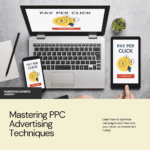What is Social Media Advertising?

Social media advertising means using platforms like Facebook, Instagram, Twitter, and others to promote products through paid ads. It helps businesses reach specific audiences with tailored messages to increase brand awareness, attract leads, drive website visits, and boost sales.
Why Maximizing ROI Matters
Maximizing return on investment (ROI) in Social Media Advertising is crucial because:
- Cost Efficiency: It’s cost-effective compared to traditional advertising, allowing businesses to achieve measurable results with lower costs.
- Measurable Results: Social media platforms provide analytics to track ad performance in real time, measuring metrics like engagement, clicks, and conversions.
- Targeted Advertising: Precise targeting ensures ads reach the right audience, minimizing wasted spending and increasing conversion chances.
- Scalability: Campaigns can be adjusted based on budget and performance, providing flexibility to respond to market changes.
- Competitive Advantage: Effective strategies can enhance brand visibility, engagement, and loyalty, driving business growth and outperforming competitors.
The Significance of ROI in Social Media Advertising
Achieving positive ROI involves setting clear goals, targeting the right audience, creating engaging content, and continuously optimizing campaigns based on performance data. It’s about using every advertising dollar efficiently to achieve business objectives and growth.
Understanding Your Audience
Identifying Target Audiences: Importance and Methods
Knowing your target audience is crucial for creating content for social media marketing that connects and engages effectively. Understanding who they are allows you to tailor your messaging and content to meet their needs and preferences.
Importance of Knowing Your Audience
Understanding your audience helps you create relevant and valuable content for your social media strategy. It enables you to address their interests, concerns, and desires directly, increasing engagement and conversions. By knowing their demographics, interests, behaviours, and preferences, you can customize your content strategy to effectively reach and resonate with them.
Using Audience Insights
Audience insights provide essential data about your target audience. This includes demographics like age, gender, location, income, education, and psychographics such as interests, values, lifestyles, and attitudes. These insights help you create targeted content that aligns with their motivations and preferences.
Tools and Methods to Gather Audience Data
- Analytics Tools: Use platforms like Google Analytics and social media analytics to gather quantitative data on audience demographics and behaviour.
- Surveys and Questionnaires: Collect qualitative insights directly from your audience by conducting surveys about their interests, preferences, and feedback.
- Social Listening: Monitor conversations on social media to understand trending topics, sentiments, and issues among your audience.
- Customer Interviews: Conduct interviews or focus groups with existing customers to gain deeper insights into their needs and challenges.
- Competitor Analysis: Analyze competitors’ audience demographics and content strategies to identify opportunities in the market.
Choosing the Right Platforms
Overview of Major Social Media Platforms
Social media Advertising platforms are essential tools for connecting and engaging with audiences worldwide. Here’s a brief look at each platform and its unique features:
- Facebook: Largest platform with diverse content formats like posts and videos. Ideal for broad audience reach and targeted advertising.
- Instagram: Visual-focused platform for high-quality images and short videos. Features like Stories and Reels enhance engagement, and hashtags boost visibility.
- Twitter: Real-time updates and conversations in 280 characters. Great for sharing news and trends, with hashtags amplifying reach.
- LinkedIn Professional networking with insights and job postings. Effective for B2B marketing and targeting professionals.
- Pinterest: Visual discovery platform for DIY, recipes, and fashion. Uses boards and rich pins for product promotion and SEO.
Platform Strategies
- – Content Adaptation: Customize content formats (images, videos) for each platform’s audience preferences.
- – Audience Targeting: Use analytics to understand demographics and tailor content to engage effectively.
- – Engagement Tactics: Utilize features like hashtags, stories, and live videos to interact with users and build community.
- – Advertising Strategies: Employ targeted ads (Facebook and Instagram advertising) to reach specific audiences and achieve marketing goals.
- Creating an Effective Ad Campaign
Setting Clear Objectives: Defining Goals and KPIs
Before creating ads, it’s important to set clear goals and metrics to measure success.
- Defining Goals: Decide what you want from your ads. Do you want more people to know your brand, visit your website, get leads, increase sales, or promote a specific product?
- Key Performance Indicators (KPIs): Once you have goals, choose metrics to track how well your ads are doing. This could be things like clicks, conversions, cost per sale, return on ad spending, or how much people interact with your ads.
Creating Compelling Ads: Tips for Engaging Content
Good ads catch attention and get people interested. Here’s how to make them effective:
- Know Your Audience: Make sure your ads appeal to what your audience wants and cares about.
- Clear and Simple Messages: Use easy-to-understand words that explain what you offer and what people should do next.
- Show Benefits: Focus on how your product or service helps solve problems or makes life better.
- Use Great Pictures and Videos: Use high-quality images and videos that show your brand well.
- Connect Emotionally: Make people feel something like happiness, curiosity, or urgency to make them want to learn more or buy.
- Test and Improve: Try different ad ideas to see what works best, then use what works to make better ads.
- Using Different Ad Types: Carousel Ads, Video Ads, Stories, etc.
Different types of ads work better for different people. Here are some ways to use them:
- Carousel Ads: Use these to show a few different products or ideas in one ad.
- Video Ads: Use videos to tell stories or show how things work, which often gets people more interested.
- Stories Ads: These ads take up the whole phone screen and are great for quick messages that catch attention.
- Dynamic Ads: These ads change based on what people like or do, like showing products someone looked at on your website.
- Native Ads: These ads blend into where they show up, so they look more like the rest of the page.
By setting goals, making ads that people like, and using different kinds of ads, you can make ads that get noticed and do well.
Budgeting & Bidding Strategies
Setting a Budget
When setting a budget, decide how much you can spend while still making a profit. Define your marketing goals and how advertising supports them. Use past data to estimate costs and allocate a percentage of expected revenue. Stay flexible and adjust based on how ads perform.
Allocating Funds Efficiently
Focus on channels that give the best return on investment (ROI). Track performance with analytics, spread spending across different channels and reserve some funds for testing new ideas. Regularly review and adjust based on results.
Choosing the Right Bidding Strategy for Social Media Advertising
In social media marketing, manual bidding gives control, good for experts. Automatic bidding saves time and adjusts to market changes. Use CPC for website traffic and direct response, and CPM for raising brand awareness to a broader audience. Adjust strategies to fit your goals.
Targeting and Retargeting
Targeting and retargeting are essential for making digital ads effective. Here’s how you can use these strategies to get the most out of your online marketing.
Advanced Targeting
Targeting lets you aim ads at specific groups based on age, location, interests, and behaviour. This makes your ads more relevant to your audience.
Retargeting Strategies
Retargeting shows ads to people who visited your site before. It reminds them about your brand and encourages them to come back and buy.
Measuring Performance
Metrics like click-through rate (CTR), conversion rate, and cost per acquisition (CPA) show how well your ads are doing. Tools like Facebook Ads Manager help analyze this data so you can improve your ads.
A/B Testing and Optimization
A/B testing tries different ad versions to see which works best. This helps you refine your ads and get better results over time.
Using Influencers
Partnering with influencers who fit your brand can boost your reach and credibility. They can help spread your message to their followers effectively.
Staying Updated
Keep up with trends and changes in social media and online ads. This helps you use new features and adapt to keep your ads effective.
Conclusion
Good targeting, retargeting, and regular optimization are key to successful online ads. Use these strategies to connect with your audience, improve conversions, and grow your brand online.




